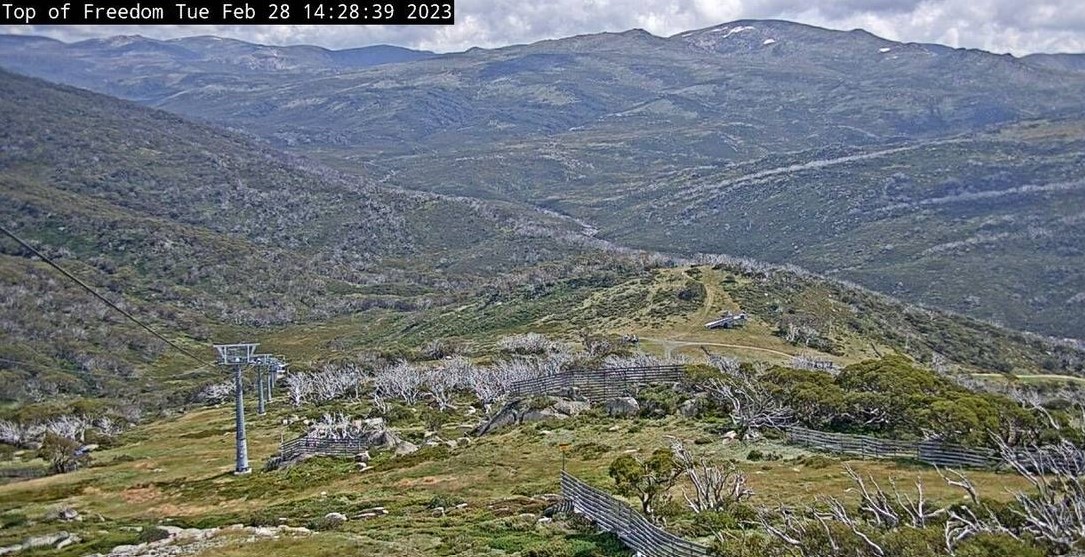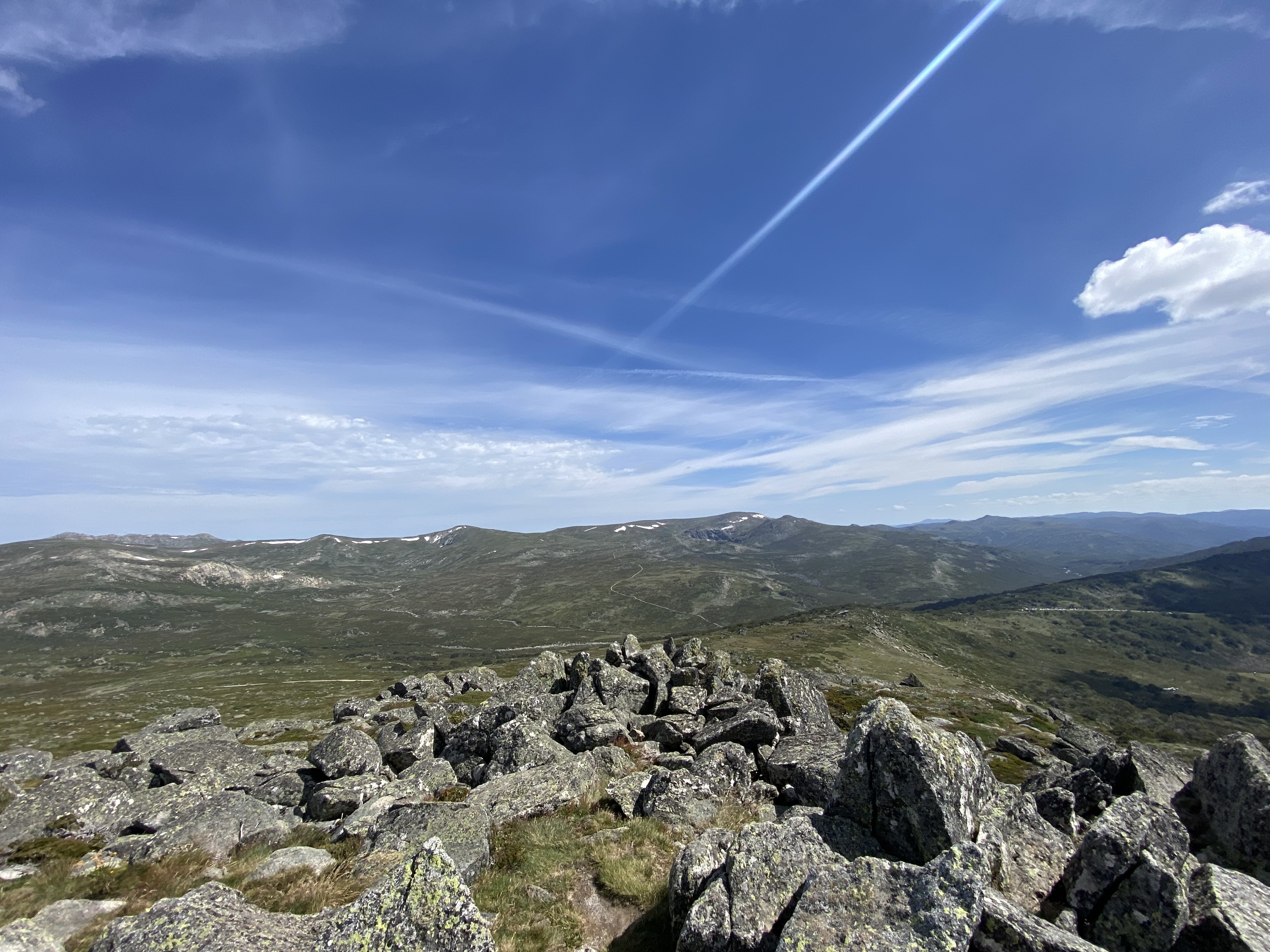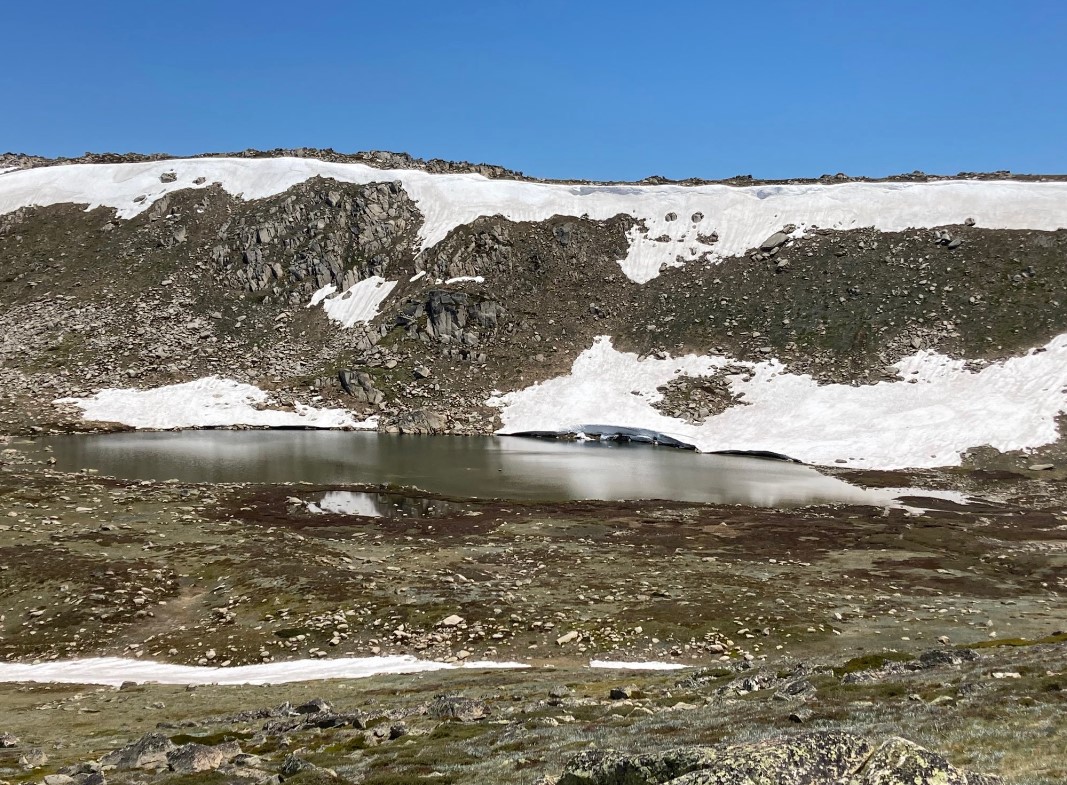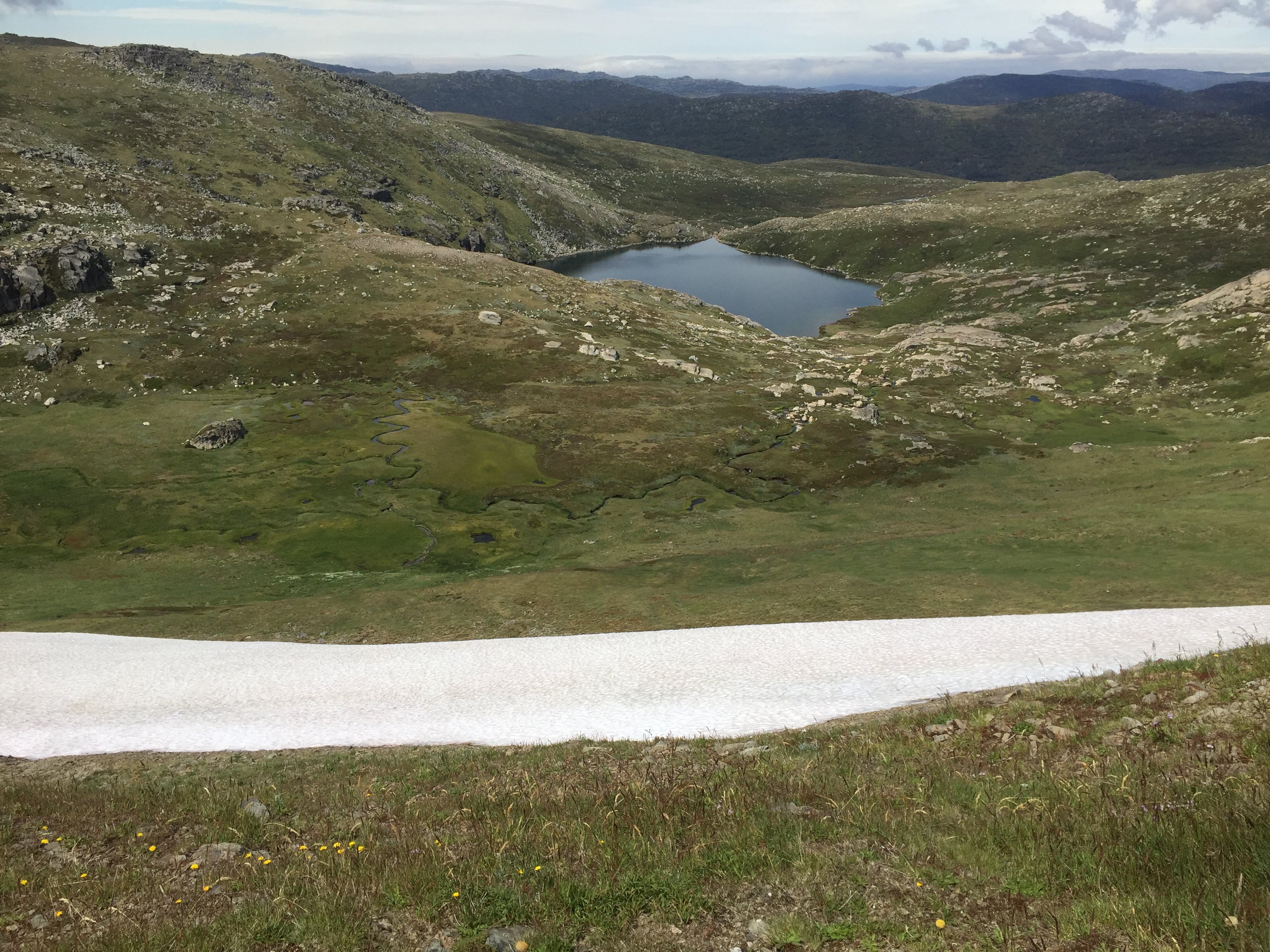Last winter's snow patches have lingered till autumn
It's the first day of autumn 2023, so you'd imagine that the Australian high country snows of winter 2022 are a distant memory. But no. Or they're not entirely gone, anyway.
As you can clearly see on the time-stamped snowcam image below, tiny patches of remnant winter snow persist on Australia's highest peaks.

Image: Mt Kosciuszko is under the words "Tue Feb". Source: ski.com.au.
For the record, the main peak on view is Australia's third highest summit Mt Twynam. At 2195 m, it's only 33 metres lower than Mt Kosciuszko, which is just visible to the left of the image.
Weatherzone has sourced some pics from walkers who have been up in the area this week. Here's a different view of Mt Twynam from near Charlotte Pass ski resort (the one above is from Guthega – part of Perisher ski resort).

Image: Mt Twynam from Mt Stilwell, above Charlotte Pass. Source: supplied.
And here's a close-up of one of the patches. When insects land on them they become immobilised quickly by the cold, which is why ravens flock to the highest peaks for a lovely feed.
Image: Mmmmm.... bugs! Source: Supplied.
How long do Aussie snow patches usually stick around?
The first thing to know is that they're always there in early summer, even after a lean snow season. And they're usually pretty big after a good snow season like 2022.
Here's a view of the ridge leading up to Mt Kosciuszko just after Christmas 2022, with Australia's highest body of water, Lake Cootapatamba, just below it.

Image: "Cootapatamba" is not easy to say quickly with a mouth full of trail mix. Source: Author's pic.
In the current climate, the last patches are gone by mid-February most years, although they sometimes make it into March and very occasionally to early April if the winter snowpack was deep.
There's evidence that significant areas of snow once lasted a lot longer. We're not talking about the ice age 10,000 years ago, when glaciers existed up around Mt Kosciuszko, and indeed carved out the basin for the lake you see above, and four nearby glacial lakes like it.
We're talking about the 1800s, when anecdotal evidence suggests the climate was slightly wetter and cooler in the Australian high country.
Paul Edmund Strezlecki – the Polish geologist and explorer who climbed and named Mt Kosciuszko in 1840 – described the Kosciuszko area as a "region of perpetual snows". Strzelecki was known for being a little loose with language, so it's likely that he was referring to large patches of remnant of winter snow rather than "perpetual snows". After all, if the snows were perpetual, you would get glaciation, and there's no evidence of that post-ice age.

Image: Snow on the last day of February 2023 above Club Lake, near Mt Kosciuszko. Source: Supplied.
Whatever the long-term history of Australia's snow patches, there's no doubt that they have lingered a little longer this year than in recent years, due no doubt to last season's heavy snow cover, and also due to frequent spring and early summer snowstorms that would have slowed the melting process.